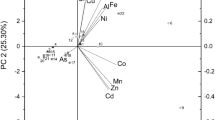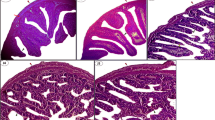Abstract
Rapeseed meal (RM) and macrophyte meal (MM; made from Egeria densa) were autoclaved (120 °C) for 10 or 60 min, either before or after NaCl (Na) or citric acid (Cit) supplementation in order to increase their nutritive values as fish feed ingredients. Effects of these supplements and treatments were evaluated by measuring the in vivo apparent digestibility of crude protein (CP), organic matter, dry matter, and the net absorption of selected minerals using common carp Cyprinus carpio. The results showed that supplemental Na increased digestibility of CP, organic matter, and dry matter, and the absorption of P in RM, which is low in Na. Supplemental Cit increased the absorption of P and other minerals in both RM and MM. The timing of autoclaving was important for RM when Cit was added in order to increase the digestibility of CP, organic matter, and dry matter, and the absorption of Ca and Fe. The duration of autoclaving was also important for RM when Cit was added in order not to lower the digestibility of CP, organic matter, or dry matter. These results indicate that optimum autoclave timing and duration can vary depending on the combination of ingredients and supplements.


Similar content being viewed by others
References
Shepherd CJ, Jackson AJ (2013) Global fishmeal and fish-oil supply: inputs, outputs and markets. J Fish Biol 83:1046–1066
Hardy RW (2010) Utilization of plant proteins in fish diets: effects of global demand and supplies of fishmeal. Aquac Res 41:770–776
Burel C, Boujard T, Tulli F, Kaushik SJ (2000) Digestibility of extruded peas, extruded lupin, and rapeseed meal in rainbow trout (Oncorhynchus mykiss) and turbot (Psetta maxima). Aquaculture 188:285–298
Enami HR (2011) A review of using canola/rapeseed meal in aquaculture feeding. J Fish Aquat Sci 6:22–36
Boyd CE (1968) Fresh-water plants: a potential source of protein. Econ Bot 22:359–368
Dillon CR, Maurice DV, Jones JE (1988) Composition of Egeria densa. J Aquat Plant Manage 26:44–48
NRC (2011) Nutrient requirements of fish and shrimp. National Academies, Washington
Nordrum S, Bakke-McKellep AM, Krogdahl Å, Buddington RK (2000) Effects of soybean meal and salinity on intestinal transport of nutrients in Atlantic salmon (Salmo salar L.) and rainbow trout (Oncorhynchus mykiss). Comp Biochem Physiol B 125:317–335
Bakke AM, Glover C, Krogdahl Å (2011) Feeding, digestion and absorption of nutrients. Fish Physiol 30:57–110
Luckstadt C (2008) The use of acidifiers in fish nutrition. CAB Rev Perspect Agric Vet Sci Nutr Nat Res 3(044):1–8
Johnson PE (1991) Effect of food processing and preparation on mineral utilization. In: Friedman M (ed) Nutritional and toxicological consequences of food processing. Plenum, New York, pp 483–498
Lowe JT, Steenbock H (1936) Cereals and rickets: the role of inorganic phosphorus in calcification on cereal diets. Biochem J 30:1126–1134
Chungcharoen A, Lund DB (1987) Influence of solutes and water on rice starch gelatinization. Cereal Chem 64:240–243
Day L, Fayet C, Homer S (2013) Effect of NaCl on the thermal behaviour of wheat starch in excess and limited water. Carbohyd Polym 94:31–37
Sugiura SH (1998) Development of low-pollution feeds for sustainable aquaculture. Ph.D. dissertation, University of Washington, Seattle, WA
Nakaguchi Y, Masuda H, Nakajo T, Yamanaka K, Satoguchi Y (2013) Survey report of regional distributions of chemical component in the Yodo River System. Bull Osaka Mus Nat Hist 67:45–81 (in Japanese with English abstract)
Bell JM (1993) Factors affecting the nutritional value of canola meal: a review. Can J Anim Sci 73:689–697
Khajali F, Slominski BA (2012) Factors that affect the nutritive value of canola meal for poultry. Poultry Sci 91:2564–2575
Ito K, Matsuo M, Kobayashi T (1994) Variation in inorganic nutrient contents of an aquatic plant cultured under heavy-metal stress and its application to monitoring of water quality. Bunseki Kagaku 43:985–990
Rabemanolontsoa H, Saka S (2012) Characterization of Lake Biwa macrophytes in their chemical composition. J Jpn Inst Energy 91:621–628
Sklan D, Noy Y (2000) Hydrolysis and absorption in the small intestines of posthatch chicks. Poultry Sci 79:1306–1310
Ferraris RP (2001) Dietary and developmental regulation of intestinal sugar transport. Biochem J 360:265–276
Lerner A, Matthias T (2015) Changes in intestinal tight junction permeability associated with industrial food additives explain the rising incidence of autoimmune disease. Autoimmun Rev 14:479–489
Shimizu M (2010) Interaction between food substances and the intestinal epithelium. Biosci Biotech Bioch 74:232–241
Ferraris RP, Diamond J (1997) Regulation of intestinal sugar transport. Physiol Rev 77:257–302
Sugiura SH, Ferraris RP (2004) Contributions of different NaPi cotransporter isoforms to dietary regulation of P transport in the pyloric caeca and intestine of rainbow trout. J Exp Biol 207:2055–2064
Sugiura SH, Marchant DD, Kelsey K, Wiggins T, Ferraris RP (2006) Effluent profile of commercially used low-phosphorus fish feeds. Environ Pollut 140:95–101
Smith N, Eddy F, Talbot C (1995) Effect of dietary salt load on transepithelial Na+ exchange in freshwater rainbow trout (Oncorhynchus mykiss). J Exp Biol 198:2359–2364
Bucking C, Wood CM (2006) Gastrointestinal processing of Na+, Cl−, and K+ during digestion: implications for homeostatic balance in freshwater rainbow trout. Am J Physiol 291:R1764–R1772
Pacha J (2000) Development of intestinal transport function in mammals. Physiol Rev 80:1633–1667
Salman NA, Eddy FB (1988) Effect of dietary sodium chloride on growth, food intake and conversion efficiency in rainbow trout (Salmo gairdneri Richardson). Aquaculture 70:131–144
Nandeesha MC, Gangadhar B, Keshavanath P, Varghese TJ (2000) Effect of dietary sodium chloride supplementation on growth, biochemical composition and digestive enzyme activity of young Cyprinus carpio (Linn.) and Cirrhinus mrigala (Ham.). J Aquac Trop 15:135–144
Gangadhara B, Nandeesha MC, Keshavanath P, Varghese TJ (2004) Growth response and biochemical composition of rohu, Labeo rohita, fed salt-incorporated diets. J Appl Aquac 16:169–176
Shiau SY, Lu LS (2004) Dietary sodium requirement determined for juvenile hybrid tilapia (Oreochromis niloticus × O. aureus) reared in fresh water and seawater. Br J Nutr 91:585–590
Cnaani A, Barki A, Slosman T, Scharcanski A, Milstein A, Harpaz S (2010) Dietary salt supplement increases the growth rate in freshwater cultured tilapia hybrids. Aquac Res 41:1545–1548
Gatlin DM III, MacKenzie DS, Craig SR, Neill WH (1992) Effects of dietary sodium chloride on red drum juveniles in waters of various salinities. Prog Fish-Cult 54:220–227
Appelbaum S, Jesuarockiaraj A (2009) Salt incorporated diets for enhancing growth performance and survival in gilthead sea bream Sparus aurata L. juveniles reared in low saline brackish water. Sci Mar 73(S1):213–217
Eroldoğan OT, Kumlu M, Kır M, Kiris GA (2005) Enhancement of growth and feed utilization of the European sea bass (Dicentrarchus labrax) fed supplementary dietary salt in freshwater. Aquac Res 36:361–369
Harpaz S, Hakim Y, Slosman T, Eroldogan OT (2005) Effects of adding salt to the diet of Asian sea bass Lates calcarifer reared in fresh or salt water recirculating tanks, on growth and brush border enzyme activity. Aquaculture 248:315–324
Alam MS, Watanabe WO, Myers AR, Rezek TC, Carroll PM, Skrabal SA (2015) Effects of dietary salt supplementation on growth, body composition, tissue electrolytes, and gill and intestinal Na+/K+ ATPase activities of black sea bass reared at low salinity. Aquaculture 446:250–258
Sugiura SH, Dong FM, Hardy RW (1998) Effects of dietary supplements on the availability of minerals in fish meal; preliminary observations. Aquaculture 160:283–303
Smith MA, Thorpe A (1976) Nitrogen metabolism and trophic input in relation to growth in freshwater and saltwater Salmo gairdneri. Biol Bull 150:139–151
Keshavanath P, Oishi CA, Fonseca FAL (2012) Growth response of tambaqui (Colossoma macropomum) fingerlings to salt (sodium chloride) supplemented diets. J Fish Aquat Sci 7:439–446
Chamorro S, Gómez-Conde MS, Centeno C, Carabaño R, De Blas JC (2007) Effect of dietary sodium on digestibility of nutrients and performance in growing rabbits. World Rabbit Sci 15:141–146
Chamorro S, Gómez-Conde MS, Carabaño R, De Blas JC (2007) Low dietary sodium content affects the digestibility of nutrients and fattening performance in growing rabbits. Span J Agric Res 5:470–473
Yin YL, Huang C, Wu X, Li T, Huang R, Kang P, Kong X (2008) Nutrient digestibility response to graded dietary levels of sodium chloride in weanling pigs. J Sci Food Agr 88:940–944
Sugiura SH, Roy PK, Ferraris RP (2006) Dietary acidification enhances phosphorus digestibility but decreases H+/K+-ATPase expression in rainbow trout. J Exp Biol 209:3719–3728
Rafacz-Livingston KA, Martinez-Amezcua C, Parsons CM, Baker DH, Snow J (2005) Citric acid improves phytate phosphorus utilization in crossbred and commercial broiler chicks. Poultry Sci 84:1370–1375
Ammerman CB, Baker DP, Lewis AJ (1995) Bioavailability of nutrients for animals: amino acids, minerals, vitamins. Academic Press, San Diego
Kalita P, Mukhopadhyay PK, Mukherjee AK (2007) Evaluation of the nutritional quality of four unexplored aquatic weeds from northeast India for the formulation of cost-effective fish feeds. Food Chem 103:204–209
Walsh CT, Sandstead HH, Prasad AS, Newberne PM, Fraker PJ (1994) Zinc: health effects and research priorities for the 1990s. Environ Health Perspect 102(S2):5–46
Fairweather-Tait S, Hurrell RF (1996) Bioavailability of minerals and trace elements. Nutr Res Rev 9:295–324
Hambidge M (2003) Biomarkers of trace mineral intake and status. J Nutr 133:948S–955S
Acknowledgments
The authors thank A. Kosugi, T. Watanabe, N. Tanemura, and the staff of the Environmental Management Center, the University of Shiga Prefecture, for their technical advice. The results of this study were presented at the biannual meeting of the Japanese Society of Fisheries Science, Mie Prefecture, Japan, 19–22 September 2013 (abstract no. 406).
Author information
Authors and Affiliations
Corresponding author
Rights and permissions
About this article
Cite this article
Ishikawa, K., Sugiura, S. Combined effects of sodium chloride, citric acid, and autoclave conditions on apparent in vivo digestibility of rapeseed meal and macrophyte meal determined in common carp Cyprinus carpio . Fish Sci 82, 931–939 (2016). https://doi.org/10.1007/s12562-016-1023-7
Received:
Accepted:
Published:
Issue Date:
DOI: https://doi.org/10.1007/s12562-016-1023-7




